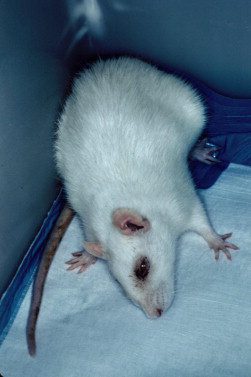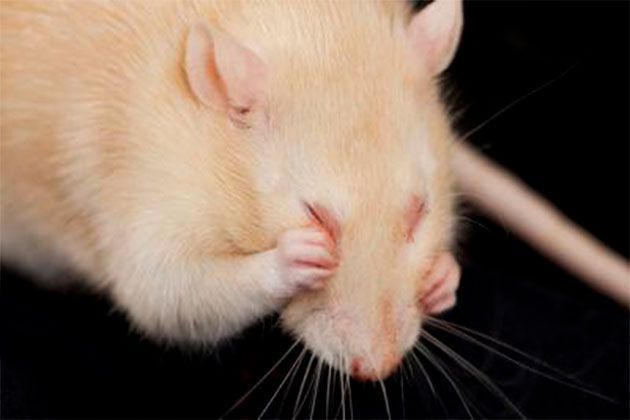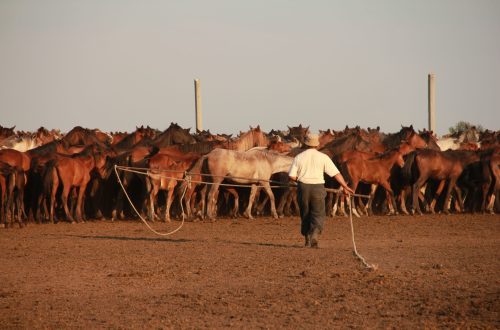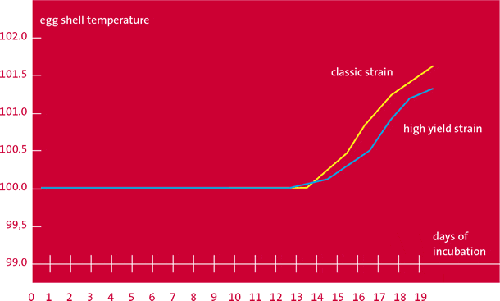
Respiratory mycoplasmosis in rats

Respiratory diseases are common in rats. It is important to find out the cause of the damage to the respiratory system in time and prescribe the appropriate treatment. In this article we will talk about respiratory mycoplasmosis in rats.
Mycoplasmosis
Mycoplasmosis refers to infectious diseases. The causative agent is the bacterium Mycoplasma pulmonis. Respiratory mycoplasmosis is characterized by acute or chronic respiratory syndrome. With respiratory mycoplasmosis, a large number of bubbles and abscesses appear on the surface of the lungs of a rodent, all this leads to the development of pneumonia, in females, infectious processes in the uterus may develop.
Mycoplasmosis in rats is species-specific, that is, rat mycoplasmosis is usually not dangerous for humans and other animals, and vice versa. However, very rare cases of human infection have been described with poor hygiene and immunosuppressive conditions. Therefore, after caring for a sick animal, personal hygiene is highly desirable, and people with a weakened immune system should be temporarily protected from contact.
Ways of infection
Different types of mycoplasmas affect the respiratory system and other organs. According to some reports, 60% or more of apparently healthy rodents are carriers of mycoplasma. Mycoplasmosis in rats develops due to a decrease in immunity, age-related changes and the influence of adverse environmental factors. Infection occurs often by contact and airborne droplets. Also, rat pups can become infected from the mother in utero or during feeding. Due to the lack of a cell wall, the pathogen dries quickly in the open air, so that care items, feed, litter and water are not dangerous. Before buying a new animal, it must be quarantined, kept in a separate cage for about two weeks. This will not only protect other pets from mycoplasmosis, but also from other infections. Quarantine does not give a 100% guarantee, since the disease can proceed in a latent form. It is very important to recognize the disease in the early stages, while the condition of the rodent is not critical – in which case it can still be helped. However, if the disease progresses, there is no treatment, and the condition of the rat is aggravated by ammonia vapor from the filler in an improperly equipped or not cleaned cage for a long time, vitamin A and E deficiency, unbalanced diet and cigarette smoke with the owner’s habit of smoking in a room with rats – the outcome can be sad .
Symptoms
Rat owners often go to the clinic with the fact that the pet has caught a cold. However, the cause of the condition is most often an infectious process. Signs of mycoplasmosis are not specific, they can be characteristic of any respiratory diseases:
- Cough
- Sneezing
- Wheezing, wheezing and heavy breathing
- Discharge of mucus from the nose
- Ocular discharge, discharge of porphyrin from the nose and eyes
- Rapid fatigue, lethargy
- Dull tousled hair, the rat stops washing and cleaning
- Unnatural posture: back hunched, head low, squinting
- Refusal of food
- Temperature increase
Porphyrin is a red or red-brown substance that periodically appears on the muzzle of a rat: on the nose and around the eyes, and looks like blood. Porphyrin is secreted by special garder glands, which are located in the inner corners of the rat’s eyes. It is secreted by the body of the animal for a reason. This is a kind of indicator of the pet’s health status. If the substance is produced within the normal range corresponding to age, there is no reason to worry. But if there is too much of it, you should look for the cause. Its presence indicates that the animal is ill, feels bad and uncomfortable, experiences pain, stress.
With a latent stage or carriage, the pet is outwardly healthy and does not show signs of the disease. Sneezing and a slight release of porphyrin is characteristic of the initial stage, while activity and appetite remain. Shortness of breath and wheezing in the lungs, dull tousled hair, discharge from the nose and genitals, an unnatural hunched posture and incoordination are a pronounced clinical picture of the disease. In the terminal stage, the pet becomes inactive, the body temperature drops, weakness and exhaustion appear.
Diagnostics
If your rat is sick, then at the very first symptoms, you need to contact a ratologist who treats rats and other rodents, and hares. The doctor will examine your pet, auscultate (listen) to the lungs with a phonendoscope. To clarify the type of pathogen, a swab will be taken from the nasal cavity, conjunctiva, pharynx, with a genital form of swab from the vagina for PCR, the result is usually ready within three days. Also, to exclude pneumonia, pulmonary edema, neoplasia, an X-ray examination is performed. If necessary, blood sampling is carried out. All these diagnostic procedures are necessary not only for the determination of mycoplasmosis, but also for the timely diagnosis of secondary infections caused by other viruses and bacteria. The sooner the animal gets to the veterinarian, who will examine it and, if necessary, prescribe a series of tests for it, the sooner an accurate diagnosis will be made and it will be possible to start treating mycoplasmosis.
Treatment and care
Treatment for mycoplasmosis is complex. To suppress the microorganisms themselves, antibiotics are used: Baytril, Ciprofloxacin, Doxycycline, Ceftriaxone, Azithromycin, Tylosin, Clarithromycin. Hormonal corticosteroid drugs (Dexamethasone, Prednisolone, Depomedrol, Metipred) are used in chronic and complicated cases of the disease to relieve bronchial inflammation and ease breathing. Bronchodilators, for example, Salbutamol, Eufillin for the relief of asthma attacks. Non-specific therapies include:
- Oxygen therapy for cyanosis of the integument and difficulty breathing
- Discharge from the eyes and nose is removed with saline
- To strengthen the immune system, immunomodulators are used, for example, Fosprenil, or a decoction of echinacea
- Humidify the air in the room to make breathing easier
- In case of indigestion after the use of antibiotics, it may be necessary to restore the intestinal microflora with fermented milk products and probiotics
- Vitamins and minerals are added to the diet
- In the absence of appetite, feeding is carried out by force with special mixtures for rodents.
Important! It is strictly forbidden to prescribe antibiotics of the penicillin series for the treatment of rodents. They are ineffective against mycoplasma. Penicillins are dangerous for rodents, due to anaphylactic shock, they can die.The disease in rodents is treated for at least two weeks, which is associated with the development cycle of microorganisms.
For treatment, the rat can be left in the hospital of the clinic, where the animal will receive all the necessary drugs and procedures under the supervision of doctors, or in uncomplicated cases, it can be treated at home. If necessary, you can buy an inhaler and rent an oxygen concentrator to effectively help your pet at home.
Prevention
Unfortunately, when purchasing a rat, it cannot be guaranteed that at the moment it is not sick with mycoplasmosis in a latent (hidden) form. In order to protect yourself from buying a knowingly sick pet, you should not take a pet at bird markets, pet stores and offers on online trading platforms, or other dubious sources. Prepare to buy a rodent in advance, find a trusted nursery, see what conditions the rats live in, whether the livestock is visually healthy. After making sure everything is in order, it is still worth quarantining a new pet if there are already other rodents in the house. If, nevertheless, the pet is sick, then it is better to put him in another cage. It is important to wash your hands after contact with a sick rat, to observe hygiene standards. It is recommended to use high-quality, not dusty filler. Food products should be varied and cover all the nutritional needs of the pet, do not forget about vitamins and minerals. They are available both in the form of individual supplements and in the form of a treat. Observe the temperature, humidity and other microclimate parameters in the room where the rats live. Too dry air contributes to the drying of the mucous membranes, their protective properties are reduced and the risk of getting sick increases.





